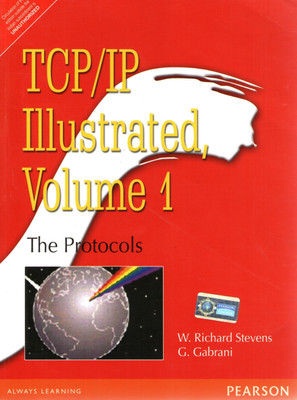TCP/IP Illustrated(English, Paperback, Stevens W Richard)
Quick Overview
Product Price Comparison
TCP/IP Illustrated is a complete and detailed guide to the entire TCP/IP protocol suite but with an important difference from other books on the subject. Rather than just describing what the RFCs say the protocol suite should do, this unique book uses a popular diagnostic tool so you may actually watch the protocols in action. For students writing applications that run over TCP/IP, or for those responsible for managing and maintaining a TCP/IP internet, this bookŌĆÖs innovative approach helps readers at all levels to truly understand how TCP/IP really works. Rather than just describing the protocols from an abstract, standards-related point of view-describing what the standards say the protocol suite should do-TCP/IP Illustrated, Volume 1 actually shows the protocols in action. Stevens also recognizes that readers deal with multiple TCP/IP implementations on heterogeneous platforms. Therefore, the examples in this book show how current, popular TCP/IP implementations operate-SunOS 4.1.3, Solaris 2.2, System V Release 4, BSD/386, AIX 3.2.2, and 4.4 BSD-and they relate these real world implementations to the RFC standards. With this unique approach, TCP/IP Illustrated presents the structure and function of TCP/IP from the link layer up through the network, transport, and application layers. Salient Features Presents the structure and function of TCP/IP from the link layer up through the network, transport, and application layers Uses the Lawrence Berkeley LaboratoriesŌĆÖ tcpdump program to capture packets in promiscuous mode under a variety of OS and TCP/IP implementations. Covers the newest TCP/IP features, including multicasting, path MTU discovery, and long fat pipes Includes various methods and techniques for routing Provides the fundamentals of ATM technology and TCP/IP over ATM networks


